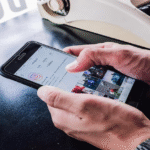Scoubidous, also known as boondoggles in the United States, are colorful plastic laces that are braided into keychains, bracelets, and other decorative items. Originating in France, this fun and engaging craft has delighted generations of children and hobbyists with its vibrant colors, simple techniques, and infinite design possibilities. From summer camps to schoolyard trends, scoubidous have carved out a niche in the world of do-it-yourself (DIY) crafts.
This article explores the fascinating journey of scoubidous — from their origins to their modern-day renaissance — along with detailed guides, patterns, and creative ideas for enthusiasts of all ages.
The Origins of Scoubidous
A French Invention
The term “scoubidou” first gained popularity in France during the late 1950s, primarily due to a novelty song titled “Scoubidou” by French singer Sacha Distel. The catchy tune sparked a trend among young people to braid plastic strings into fun and colorful designs. The term gradually came to refer not just to the song, but also to the plastic lace craft itself.
Crossing Borders
While scoubidous flourished in France, similar crafts existed in other countries. In the United States, the craft was commonly known as “boondoggle,” often taught in summer camps. Despite regional name differences, the essence of the craft remained the same: using flexible plastic laces to create braided and knotted designs.
Materials Used in Scoubidou Craft
Plastic Laces: The Star Ingredient
Scoubidous are primarily made using PVC (polyvinyl chloride) plastic laces. These are soft, hollow or solid, and available in a wide array of colors and finishes, including:
- Transparent
- Neon
- Glow-in-the-dark
- Metallic
- Glittery
The laces are usually about 1 meter in length and can be either flat or round, depending on the desired braid style.
Optional Tools and Accessories
To enhance the crafting process or design complexity, several tools can be helpful:
- Keyring hooks
- Beads
- Scissors
- Clips or clamps for holding cords
- Needles for threading (optional)
Basic Scoubidou Techniques
Mastering scoubidous begins with learning the basic knotting techniques. These simple braids form the foundation of more complex and creative designs.
The Square Knot (Box Stitch)
This is the most common and beginner-friendly braid in scoubidou crafting. It involves weaving four strands (two pieces of scoubidou lace) in an over-under pattern to create a square, box-like shape.
Steps:
- Fold two laces in half and cross them at the center.
- Weave one lace over and under the perpendicular laces.
- Repeat the pattern in a square motion.
- Pull each strand tightly to form a neat square.
The Round Braid (Barrel Stitch)
A variation of the square knot, the round braid produces a spiral or tubular design. It’s slightly more advanced but highly popular for making keychains.
Steps:
- Start with a square knot base.
- Instead of alternating over-under directions, maintain the same weaving direction.
- Pull tight to produce the rounded shape.
Cobra Stitch (Chinese Staircase)
This technique involves wrapping one lace around the others repeatedly to form a spiral staircase look.
Steps:
- Anchor three laces together.
- Take one lace and loop it around the other two.
- Continue looping in the same direction for a coiled design.
Intermediate and Advanced Scoubidou Patterns
Super Cobra
The super cobra is a wider version of the cobra stitch using more strands for a chunkier effect. This is often used for bracelets or belt-like projects.
Multi-Strand Box or Circle
With more than four strands (typically six or eight), you can create larger versions of the square or circle stitch. These patterns can be used for building thicker, more complex designs.
DNA Twist
As the name suggests, this design mimics the helical structure of DNA and is perfect for those looking to challenge their crafting skills.
Double Helix
Two spiral patterns are intertwined in this intricate design, usually requiring at least six strands. It’s great for making more sculptural or artistic pieces.
Scoubidous in Pop Culture and Global Influence
Scoubidous in Schools and Camps
Scoubidous became a rite of passage in many school and summer camp experiences, especially in Europe and North America. Children learned to braid them, trade them with friends, and even compete in creating the longest or most complex keychains.
Revival in the 2000s
The early 2000s saw a resurgence of scoubidous, especially in France and the UK. Craft stores began stocking colorful laces again, and TV craft shows featured scoubidou tutorials. This revival brought the craft to a new generation, blending nostalgia with innovation.
Social Media and Modern DIY Culture
With the advent of platforms like Pinterest, Instagram, and TikTok, scoubidou crafting has found a fresh audience. Influencers and crafters post tutorials, time-lapse videos, and new patterns that take this vintage hobby into the digital age.
Creative Project Ideas
Keychains
The most iconic scoubidou project. Use square, round, or spiral braids to create colorful key fobs.
Bracelets and Anklets
Incorporate beads and charms for a personal touch. Mix and match colors to reflect personal style or team colors.
Backpack Accessories
Create fun tags or mini animal figures to hang on zippers or school bags.
Ornaments
Use festive colors to make Christmas tree ornaments or window decorations.
Phone Straps and Lanyards
Scoubidous can be adapted into useful accessories for everyday use, adding flair to tech gear or ID cards.
Educational and Therapeutic Benefits
Motor Skills Development
For children, scoubidou crafting helps develop fine motor skills, hand-eye coordination, and dexterity.
Encourages Patience and Focus
Learning complex braiding patterns requires concentration and perseverance, making scoubidous a great activity for building mental discipline.
Therapeutic and Relaxing
Much like adult coloring books or knitting, scoubidou crafting can be meditative, helping reduce anxiety and stress through repetitive motion and tactile engagement.
How to Start Your Scoubidou Hobby
Starter Kits
Many craft stores sell scoubidou starter kits that include laces, instructions, and accessories. These are ideal for beginners.
Online Resources
From YouTube tutorials to downloadable eBooks and pattern PDFs, the internet is full of scoubidou guides. Look for beginner-friendly content to ease your entry into the craft.
Join Online Communities
Facebook groups, Reddit threads, and craft forums offer support, inspiration, and tips. Sharing your creations and asking for advice can enhance your learning curve.
Troubleshooting Common Mistakes
Loose Knots
Ensure each loop is pulled tightly and evenly. Practice slow and consistent tensioning.
Tangled Laces
Lay out your workspace neatly and avoid using overly long laces until you’re comfortable with the technique.
Uneven Patterns
Follow the same weaving sequence each time. Mark the start and end of each braid section if necessary to stay consistent.
Sustainability and Eco-Friendly Scoubidou Options
PVC Alternatives
Traditional scoubidou laces are plastic-based, but some eco-conscious brands now offer biodegradable or recycled-material laces.
Upcycling Old Materials
Creative crafters use materials like paracord, cotton twine, or even shoelaces to mimic scoubidou techniques.
The Future of Scoubidous
With a renewed interest in handmade crafts and the growing maker culture, scoubidous are poised to enjoy continued popularity. They strike a perfect balance between simplicity and creativity, offering endless variations that suit both beginners and experts.
From schools to design studios, the humble plastic lace continues to inspire and evolve — a colorful reminder of how simple materials can spark joy and artistry.
Conclusion
Scoubidous are more than just a childhood pastime. They are a vibrant and versatile craft that encourages creativity, improves motor skills, and connects people across generations and cultures. Whether you’re a curious beginner or a seasoned crafter, the world of scoubidous offers an inviting, imaginative space to create something truly unique.
So grab some laces, pick a pattern, and start weaving your way into this fascinating, colorful hobby.
FAQs
1. What is a scoubidou made of?
Scoubidous are typically made of flexible plastic laces, usually PVC. They come in various colors and finishes like neon, glow-in-the-dark, and metallic.
2. Is scoubidou crafting suitable for kids?
Yes! It’s a popular activity in schools and camps. It enhances fine motor skills and encourages creativity. Just make sure younger children are supervised with scissors.
3. Can I make scoubidous with other materials?
Absolutely. While plastic laces are traditional, you can also use paracord, yarn, or fabric strips to create similar braided designs.
4. Where can I find scoubidou tutorials?
YouTube, Pinterest, and craft blogs are great resources. There are also books and downloadable guides available online.
5. How long does it take to learn scoubidous?
Most basic patterns like the square knot can be learned in minutes. More advanced designs may take a few days of practice to master.
6. Are scoubidous environmentally friendly?
Traditional laces are not biodegradable, but eco-friendly alternatives are emerging. You can also reuse or repurpose materials to reduce waste.







